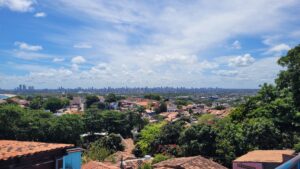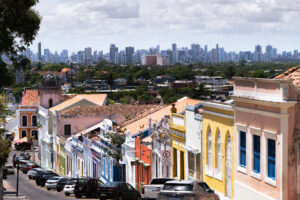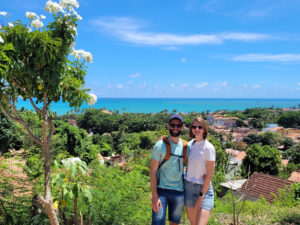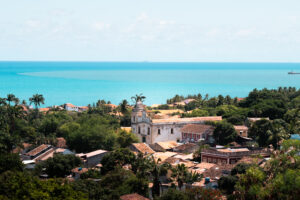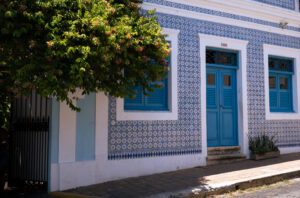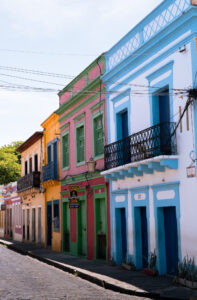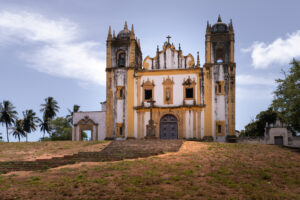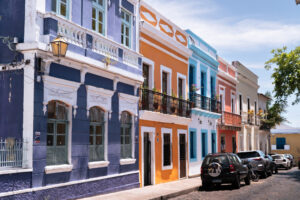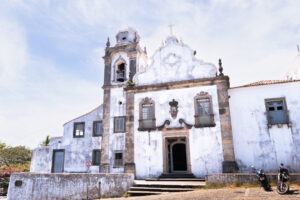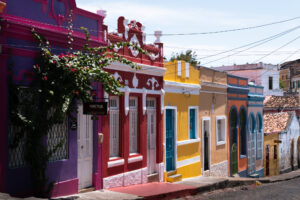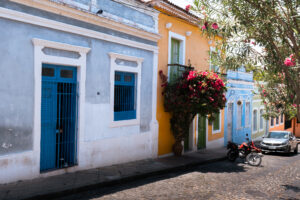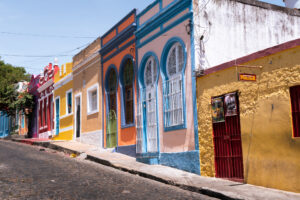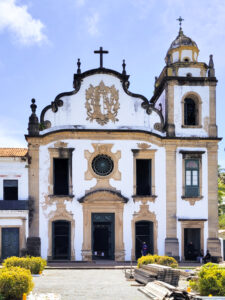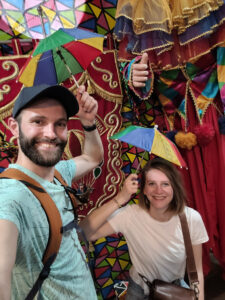The city, just 12 km from Recife, takes about 40 minutes to reach because of traffic, but taxis are a practical and affordable option to get there. Once you arrive, don’t miss out on tasting the delicious local food, especially the fish dishes that perfectly reflect the region’s flavors. We highly recommend Olinda Art & Grill, a great restaurant with an amazing view of Olinda and Recife in the background.
Our guide, Romero, was fantastic and shared lots of stories about the city. Here’s what we learned:
Olinda, founded in 1537, quickly became the seat of the captaincy of Pernambuco. It’s one of the oldest cities in Brazil and got its name from Duarte Coelho Pereira, who supposedly exclaimed, “Ó linda situação para se fundar uma villa” (“What a beautiful place to build a town”) when he reached the top of the hill and decided to build his home there. Nicknamed “Little Lisbon,” Olinda thrived for over three centuries thanks to the sugarcane and pau-brasil (Brazilwood) trade, which gave the country its name.
In 1630, the Dutch took over Pernambuco and invaded Olinda, burning it down in 1631. They reused the stones to build Recife at the port of Olinda. The Portuguese regained control of the city in 1654 and began rebuilding it. Portuguese influence is still visible today, especially in the azulejos (painted tiles) decorating some houses and the cobblestone streets made with stones transported from Portugal. These stones were used as ballast to stabilize their ships, which they then replaced with Brazilian goods on the return journey.
Listed as a UNESCO World Heritage Site in 1982, Olinda stands out for its colorful streets. The house colors served as addresses (e.g., the blue house with pink shutters), and each combination of façade and shutters had to be unique. To preserve this heritage, it’s now forbidden to change the color of an existing façade.
Another unique feature of the city is its churches, which only have one tower. Back then, the city had to pay taxes to Portugal for every completed church—defined as having two towers. To avoid this, Olinda’s governor built churches with just one tower, claiming they were still under construction. The money saved was used to start building new churches, cleverly avoiding taxes. With more than 27 churches in Olinda, they must have saved a fortune!
If you’re into carnival, you’ve probably already heard of Olinda! Every year, its famous carnival attracts visitors from all over the world. One of the highlights is the bonecos gigantes, giant dolls used in parades. When they’re not being paraded, these massive figures are displayed in a dedicated museum open to visitors year-round. So, we decided to visit the museum to meet these impressive plastic giants!
If you’re in Recife, don’t miss Olinda—it was a real highlight for us!



